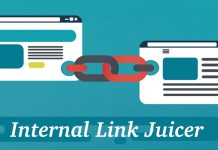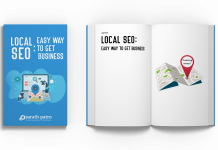There are millions of blogs being posted on the internet every day.
You have got to be the best if you want your blogs to stand out from the rest. It makes it kind of tough to stand out from the rest, but you have to if you like your blog to be successful.
Only talking about Google statistics, people conduct over 2.2 million searches about SEO every day.
You may want your blog to show up on the first page of Google, which could be a deciding factor between a successful business to one that’s broke.
One of the most frequently asked and searched questions online is what is SEO?
Well as many of us know that it stands for Search Engine Optimization, but what exactly do we mean by optimization? and what needs to be optimized? Is it the design of the website, the content, or the links in it? Well yes, is the answer to all those questions and that’s not it there is much more when it comes to optimization.
Definition:
SEO stands for search engine optimization. It is the process of optimizing online content so that it shows up as the top result on a search engine. It is the art of ranking high on a search engine for particular keyword searches.
The magic you work with on your article for it to be shown as one of the top results on a search engine, which 90% of the cases is Google search console.
White hat vs Black hat:
People are in the SEO game to either make a few grand real quick or for the long run.
If you want to make some money real fast you may want to go with the black hat SEO.
The black hat SEO is focused on just optimizing the web content and not giving consideration to humans at all. There are plenty of ways to bend and break the rules to get your websites ranking high, which is a prime way for black hat SEOs to make a few thousand bucks real fast.
The black hat SEO approach ultimately results in spammed website pages that get banned very quickly. It is like a punishment to the marketer, sabotaging their chance of creating something sustainable in the future.
It is a good way of earning a few thousand dollars quickly but you need to always lookout for new trends and search engine updates to dodge them and find a way into the leading search results.
White hat SEO process, on the other hand, builds a steady and sustainable future for online business. The main focus of this type of SEO is the human audience who will be viewing your blogs and content online.
With white hat SEO, you always try to give your audience the best and engaging content and make it easily accessible to them by obeying the search engine’s rules.
On-page optimization plays a vital role and helps you rank high on search engines and improves the overall readability of your blogs.
On-page optimization helps in gaining visibility in search results and pages without proper optimization of your blogs are less likely to be found on any search engines.
Off-page optimization is everything that you do outside your webpage and which increases your website ranking.
Blogging as a guest is a perfect example of off-page optimization. This will not only boost the incoming traffic to your website but also increases its ranking by strengthening the backlink of the website.
Some important Search engine optimization techniques you need to follow for you blogging successfully are:
1.Using the keyword in the right places:
There was a time when bloggers used to just spam the keywords into their blogs and get on Google’s first page in no time. But times have changed now and it is all about using the keyword in just the right places. The first paragraph or the first 150 words of your article is a great place to use your keywords.
Other than the first paragraph there are other elements where you can place your keywords: The title tag, the URL, subheadings, and meta description. Using a keyword in the title tag is a good idea.
A title tag is an HTML element that gives the readers a brief about your website and what they should be expecting on it.
Adding keywords in the URL slug could be beneficial as well. The URL slug is the extension present next to the domain address to open a website. This is where you should place a keyword for maximum effectiveness.
A meta description is however not a major part of your website but it can cause readers and internet crawlers to click on your website link. This sets a decent traffic flow towards your website and can increase its ranking. When writing a meta description you should see that you do not exceed more than 100 to 150 characters. Exceeding the limit may lead the data not showing properly on Google.
2.Optimization of images:
Speaking about optimizing keywords, you have to remember that your images should be keyword optimized as well. You can rename your picture with keywords, which shouldn’t be a difficult task.
Try to be as descriptive as possible to help search engines understand your images better. After you rename the filename of the image it will automatically be converted with dashes in between words.
Try to include keywords in the filename of your pictures, rather than describing them. When you upload a specific picture on WordPress the filename automatically will be converted with dashes in between each word. For example, if you have a picture of ‘Taj Mahal’ instead of naming it ‘photo_2019_05_10_13’ name it as ‘Taj Mahal Photography’ this way of naming pictures is a better idea and leads more traffic to your website.
Besides the filename, you can also add keywords to the alt text of images. Try to make alt text as descriptive as possible. Try to engage in a user-oriented approach while writing alt texts for images.
3.Integrate external links:
Writing SEO content requires a couple of rules that have to be kept in mind. The first being that your content should be of supreme quantity and appealing to the audience. Also, you need to integrate outbound links to your content.
What are outbound links?
Outbound links are external links that lead to another website. This gives relevance to search engines to determine the content quality. Using outbound or external links can increase the value of your blog for readers.
Things to remember while out-bounding links:
Excessive use of outbound links can take away the attention of readers from your article, so it is advised you do not spam them into your article and keep them to minimal usage. Provide links to only authoritative sites only.
Set external links to open in another tab, this helps in retaining the reader’s attention. Search engines take too many links as an indication that you are intentionally selling links. Try to use outbound links throughout the article despite stuffing them all in a single paragraph.
Using them naturally can be more effective than just stuffing them all in one place. Try to have a nice text space between each link which would be helpful. Set your outbound links to open into a new tab so that the readers do not get distracted from the actual article.
There are usually two types of outbound links: no-follow links and do-follow links. Dofollow links proceed on authority whereas no-follow links do not. Using no-follow links have their benefits such as the writer may not get penalized for linking to low-quality websites or using too many outbound links in their content.
4.Using internal links:
Unlike external links which lead you to other domains, internal links keep the readers on your website. Internal links provide more knowledge about something from your content library.
Internal links help search engine crawlers to index more of your content. Some tips which could be helpful to you while using internal links:
- Set your internal links to open in a new tab: This ensures that the readers don’t forget why they came to this certain page.
- Anchor text: Let it be an external link or an internal link, the reader should be aware of what they should be expecting on the other side.
- Link related pages: You would not like to spam the readers if you care about them. Linking to related sites will be helpful for the readers to grab more knowledge. If you link the readers to unrelated links they will lose interest in your article and kill traffic on your webpage.
5.Increase loading Speed
Readers do not like to sit and wait for several minutes for your website to open. Try to increase the loading speed of your website for a better experience for the users. Since Google Analytics are all about user experience, loading speed is considered to be a major ranking factor.
Everyone in today’s fast pace world wants things to occur within seconds, and if your website fails to do so it could lead to sluggish performance. This not only decreases chances for your website to gain top rankings but you will also lose about 40 percent of readers.
You can use the GTmetrix to increase the loading time of your webpage. This assesses your website’s performance and identifies factors that may be slowing down its speed. Working with GTmetrix is super easy, all you need to do is type in your website link and click on the analyze button. Within a few seconds, you will receive a performance report that contains your speed score, loading time, and number of HTTP requests. The GTmetrix helps you increase the loading time by giving you helpful tips on how to do so.
6.Mobile-Friendly Web Pages:
As we all know that mobile phones are taking over our lives. Not all readers visit your blogs using a laptop or computer and most of them often tend to use their mobile phones. Google webmasters also nowadays is prioritizing the mobile version of websites in their indexing process.
You can take up the Google mobile-friendly test so that you know what exactly is keeping you to build that perfect user and mobile-friendly website. This test will inform you upright on whether or not your webpage is mobile-friendly. In case it is not, you will be given a list that shows you the needed fixes.
Keyword Research:
Keyword research provides a better understanding of your target audience and how they are searching for your content, services, or products.
Keyword research can help you find answers to questions like:
- What are people searching for?
- Number of people searching for it?
- What format do they expect that information in?
Once you uncover what people are searching for you can begin to strengthen your SEO strategy.
Firstly you need to know what a keyword is. So what is a keyword?
Keywords are ideas that define your content. These are the words that people type in the search engine when they are looking for specific information.
Before using keywords try and ask yourself questions. You may want to target the audience according to what makes sense to them. To do so you need to gain a bit more knowledge about your audience. You can ask yourself questions like:
- Who is searching for these terms?
- What type of products are they looking for?
- Where are potential buyers staying? Are they local, national, or international clients?
How important are keywords in SEO?
Keywords are important when it comes to SEO because they are what people type in the search engine and end up finding your blog.
Discovering new keywords:
You certainly will have a few keywords in mind and would want to be ranked for. You can use a keyword tool to search for new keywords, this can help you in discovering what variations of keywords are more popular among the users.
In the process of discovering keywords for your blogs, you will see that the search volume of each of the keywords will vary. You may want to target the lower search volume terms as they are more advantageous to others.
Keyword Research:
All the above terms may be the same but trust me they are not. They are all different varieties of digital marketing.
SEO: Search Engine Optimization
SEO is the process of bringing in more traffic to your website by increasing the ranking of it.
SEO is the process that many companies go through to make their website rank higher than their competitors.
SEM: Search Engine Marketing
SEM is defined as the process of driving traffic to your web pages by paid advertising on search engines.
SEM is regarded to be one of the best ways to grow your business and promote your products.
SMM: Social Media Marketing
Increasing traffic on your web pages by advertising on social media websites like Facebook, Instagram, Twitter, etc.
SMM is the easiest way to reach out to thousands of people. Keeping in mind that half the world population is on social media this way of marketing is effective.
Frequently Asked Questions
What is SEO and how it works?
SEO stands for Search Engine Optimization. It is the process of optimizing your website to get more traffic to it and make it user-friendly.
What are SEO optimization services?
Some of the SEO optimization services include more traffic, more leads, more revenue, brand awareness, business growth, more trust, and authority.
How Google SEO works?
Google follows links and discovers URLs by reading sitemaps. Google crawls through the web looking for relevant pages and indexes them.
What is the difference between Google SEO and Bing SEO
Google SEO examines the keywords and the context of the keywords as well whereas, Bing SEO focuses on precise keywords only.
How long will it take to rank a keyword?
It will take about six months to a year to rank a keyword on Google.
Is SEO difficult?
SEO is not as hard as people say, with just 5% work you can get 95% results. You do not need to hire a professional for it and it could be done by you itself.
Which SEO technique generates most results?
The SEO techniques are broadly classified into two: On-page and Off-page. However, the On-page SEO technique has proven to be more effective and generate better results.
Can SEO be automated?
SEO can not be entirely automated, but there are a few tools that help in automating some SEO tasks such as keyword generation, monitoring rankings, analyzing backlinks, etc.
What is off-page optimization?
Off-page optimization refers to all the activities you carry out away from the website to raise the ranking and increase the traffic to your website.





